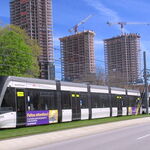nfitz
Superstar
I'm asking an engineering question. Not a financial question.Why is that so difficult to believe? What kind of carrot do you want VIA to throw at CN which could possibly compell that massive corporation with a market capitalization of $100 billion to accept relinquishing full control over its own assets?
What makes CP different from CN?CP doesn’t really have much of double-tracks left anywhere on their network and apparently doesn’t plan to restore them even in the long-term. Why should they cling to the entirety of its ROW, if there non-competing railroads who are willing to pay to to build their own tracks next to theirs?
What stops CP turning around in 30 years and using the "VIA" tracks to run freight?




